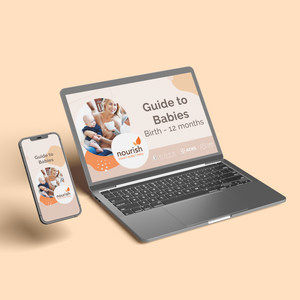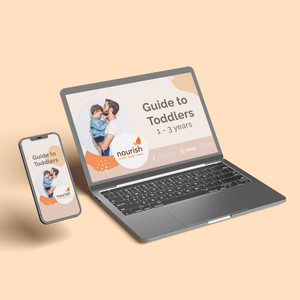Key Points:
- New parents can learn the skill of safely wrapping a baby (swaddling) to aid in settling.
- Step-by-step guide includes folding the wrap, positioning the baby, securing the arms across the chest, and ensuring the wrap is firm but not too tight.
- Emphasizes placing the baby on their back for sleep with face and head uncovered.
- Additional tips caution against wrapping too high, allow for hip and chest expansion, avoid bed-sharing, and adjust wrapping as the baby grows.
With a newborn comes many new skills to learn – one of them being how to safely wrap a baby. Wrapping (also known as swaddling) is a great strategy for parents to help their baby settle. Yet, new parents may understandably feel worried about their baby’s safety and getting it right. Read on for step-by-step guidelines on how to safely wrap a baby, plus some additional tips for safe wrapping.
Step-by-step guide: how to safely wrap a baby
Step 1:
Fold down about 20cm of the top edge of a lightweight cotton or muslin wrap.
Step 2:
Lay the baby on the wrap, shoulders in line with the fold.
Step 3:
Fold the baby’s arm across the chest and bring one side of the wrap across the arm. The arms are placed across the midline, so the baby can find their hands and self-soothe. Tuck firmly underneath the body.
Step 4:
Fold the baby’s other arm across the chest and bring the other side of the wrap across, tucking it underneath the body again.
Step 5:
Bring the bottom of the wrap over the baby’s midline and fold underneath the body. Make sure the wrap is firm but not too tight.
- Overly tight wrapping with the baby’s legs straightened together increases the risk of abnormal hip development.
- Loose wraps are hazardous as they can cover the baby’s head and face.
Step 6:
Sleep the baby on their back, with the face and the head uncovered. When placing the baby to sleep, ensure the feet are positioned at the bottom of the cot. Tuck the bedding securely and position well below the baby’s shoulders.

Additional tips to wrap a baby safely
- Don’t wrap the baby higher than the shoulders, to ensure their face and head don’t become covered.
- Allow for hip and chest wall expansion.
- Don’t wrap if the baby is bed-sharing.
- Don’t overdress the baby under the wrap: a nappy and a singlet is enough in warm weather and a light growsuit in cooler weather.
Wrapping as your baby grows and develops
Around 3 months: leave your baby’s arms free once the startle reflex disappears.
Around 4-6 months: discontinue wrapping when the baby starts to show signs of rolling during supervised playtime.
Safe wrapping and sleeping!
We hope this guide on how to safely wrap a baby has been helpful. Want to learn more about safe sleeping? Have a look at our Baby Sleep Guide. With lifetime access and easy-to-follow educational videos by early childhood experts, it offers all the information needed to give your baby the best possible start in life.
Our Products
-

01. Guide to a Healthy Pregnancy
$55 -

02. Positive Birthing Course
$55 -

03. Infant Feeding Guide
$55 -

04. Baby Sleep Guide - First 12 Months
$55 -

05. Toddler Parenting Course 1 - 3 Years
$55
-
 When to Start Antenatal Classes?
When to Start Antenatal Classes?
Becoming a parent is an incredible milestone, but it comes with a host of changes that can be daunting, especially for first time parents. Antenatal classes are all about offering expectant parents the education they need to make informed decisions, look after their bodies and care for their newborn babies. While you probably already have a long list of things you need to accomplish during your pregnancy, it’s a good idea to make time to attend antenatal classes.
-
 Development Milestones 4-8 Months
Development Milestones 4-8 Months
As they reach the middle of their first year, you'll start to see bigger leaps in their growth and ability!
In this article, we’re going to discuss your baby’s developmental milestones between 4-8 months, and what you can expect along the way.






 When to Start Antenatal Classes?
When to Start Antenatal Classes?
 Development Milestones 4-8 Months
Development Milestones 4-8 Months








